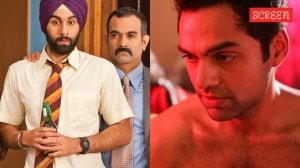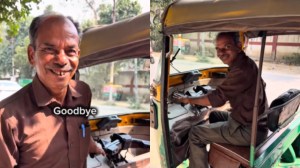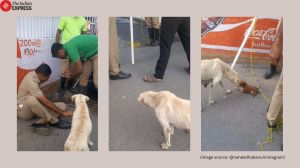Small Outside,Big Inside
Sonys Nex cameras promise the image quality of a DSLR in a pocket-friendly size.
Sonys Nex cameras promise the image quality of a DSLR in a pocket-friendly size.
Five years ago,before it entered the SLR camera race with its Alpha 100 model,Sony was still hopeful of winning over serious photographers with an all-in-one camera. And with the R1 model that it launched in September 2005,it pulled out all the stops.
The R1,on paper at least,seemed like the travellers perfect camera. It had a Carl Zeiss 5-X zoom lens starting at a super-wide 24mm-equivalent field of view. There were buttons for all the important settings,so you didnt need to dive into the menu system to make changes. Best of all,it had an APS-C-sized CMOS image sensor to record
10-megapixel images.
Not only was the R1s sensor many times larger than those used in contemporary amateur digital cameras,each one of its pixels was also considerably bigger. As a thumb rule,a bigger pixel records cleaner images than a smaller pixel. In other words,you can get images that dont look like smudges even at very high ISO settings. Shot in bright sunlight and printed at small sizes,the images from a high-end cellphone and a digital SLR dont look very different. But in a dimly lit space,the SLR always wins,thanks to its manifold larger sensor.
Coming back to the R1,it did not find many takers. Its fixed lens and a steep price ($1,000 or Rs 45,000) price worked against it at a time when Canons runaway success,the EOS 350D SLR,could be had for around $725 (Rs 33,000). Sony has stayed out of the prosumer game ever since.
Gen-Nex
But it seems the Japanese giant has not given up on the wealthy,somewhat-serious hobby photographer altogether. So,enter the Nex twins. The two new models Nex 3 and Nex 5 have two key selling points: they have APS-C (SLR-size) image sensors packed inside bodies that are as small as a compact superzoom camera. Sony claims these are the worlds smallest cameras with APS-C sensors,and,for perspective,you could compare them with the Sony H55. The Nexes are just a third of an inch wider and 87 grams heavier than the H55,which weighs just 200 grams. The R1,on the other hand,weighed a kilo.
This time,Sony has also shunned the button clutter thats so intimidating for novice users. Most of the settings are menu- driven,and the clean design seems to suggest that if you dont know the shutter from the aperture,dont bother to find out. With its large sensor and good lenses,you are going to get better-than-decent results anyway. On the other hand,if you wish to get creative,the camera helps you with clearly labelled modes,such as background defocus.
The Nexes even have a few tricks up their sleeves to shame budget SLRs. Theres the 7-frames-per-second burst rate,for one. SLRs that can shoot that fast cost a bomb. Theres also the sweep panorama mode that makes shooting panoramas as easy as slurping down noodles one smooth pull does it. And yes,they shoot noise-free,high-definition videos in low lighting.
Since these are interchangeable lens cameras,the size advantage would be lost if the lenses,too,were not kept small. Sony has introduced three lenses at present,of which even the largest an 18-200 zoom (equivalent to 27-300 mm in 35 mm film terms) measures just 4 inches when not extended. But at 524 grams,it is twice as heavy as the camera body. The supplied 18-55 mm kit lens,however,weighs just 194 grams. My own favourite,though,is the optional 16 mm pancake lens,which has a fast f/2.8 aperture and weighs only 67 grams. With its 24 mm-equivalent field of view and the Nexes flip-out high-resolution screen,you have the ideal tool for unobtrusive waist-level street photography.



- 01
- 02
- 03
- 04
- 05




























